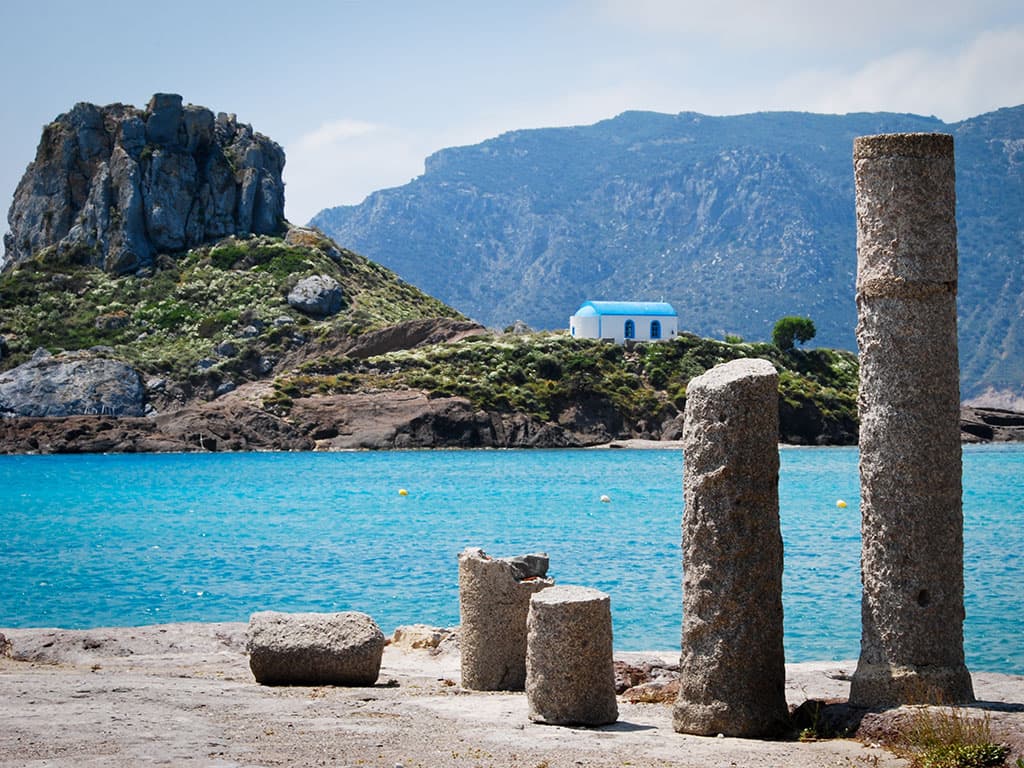Greece as a travel destination is indeed very multifaceted. There are resorts for every taste and budget (not to mention the sights)!
Here, I made a sign to make it easier to navigate in the main Greek resorts:
| Resort | How to get there | Prices | Beaches | For whom |
| Athenian Riviera | Athens International Airport | $$$ | sandy, pebble | for everyone, especially for those who have little time to relax and want to see the Acropolis of Athens |
| Thessaloniki | own international airport | $$$ | sandy | for everyone, and especially for those who want to buy a fur coat |
| Crete | two international airports and one local | $$$ | sandy, pebbly, there are areas with an entrance to the sea on stone slabs | for all |
| Rhodes island | own international airport | $$$ | pebble, sand, sand and pebble | for everyone, especially surfers |
| Corfu island | own international airport | $$$$ | narrow strip of sandy and sandy-pebble beaches | for lovers of a relaxing holiday, as well as Orthodox pilgrims |
| Santorini island |
|
$$$$ | beaches with sand of different colors, beaches with black volcanic sand are especially popular | for romantic couples, for active and inquisitive (not for families with children) |
| Kos island | own international airport | $$ | sandy and small-pebble | for lovers of a calm, relaxing holiday and families with children |
| Zakynthos island | own international airport | $$ | narrow strip of sand-pebble and sandy beaches | for lovers of a relaxing holiday and families with children |
| Kefalonia island | own international airport (by charter or plane from Athens) | $$$ | sandy and pebbly | for connoisseurs of agritourism and lovers of "Greece without pizzerias and McDonald's" |
| Mykonos Island | own international airport | $$$$ | in the West - the coast of the Aegean Sea - pebble; in the East - the Mediterranean Sea - sandy | for everyone, especially for young people and tourists with non-traditional sexual orientation |
| Peninsula Halkidiki | transfer from the airport in Thessaloniki (from 45 km and further) | $$$ | sandy beaches with a gentle entrance to the sea, 95% of the beaches were awarded the blue flag for cleanliness | for families with children and active tourists, youth, as well as for male Orthodox pilgrims |
| Peloponnese Peninsula | own international airport (Araxos), as well as Kalamata airport, which receives local and charter flights | $$$ | sandy and sandy-pebbly | for everyone, and especially for lovers of archaeological sites |
| Pieria(Paralia Katerini) | transfer from the airport in Thessaloniki (about 106 km) | $$ | sand and pebble | for lovers of mountain holidays and those who plan to buy a fur coat |
Athenian Riviera
Gorgeous beaches can be found already half an hour from the center of the Greek capital. From the southern suburbs of Athens to Cape Sounion stretch dozens of organized and wild free beaches, surrounded by impressive natural landscapes.
The Athenian Riviera is an ideal place for walking and swimming, as well as a variety of sports and outdoor activities, with the appropriate infrastructure.
Walking along the small coves, you can simultaneously shop in modern shopping centers, dine on the seashore or have fun in coastal clubs, famous for their incendiary atmosphere.
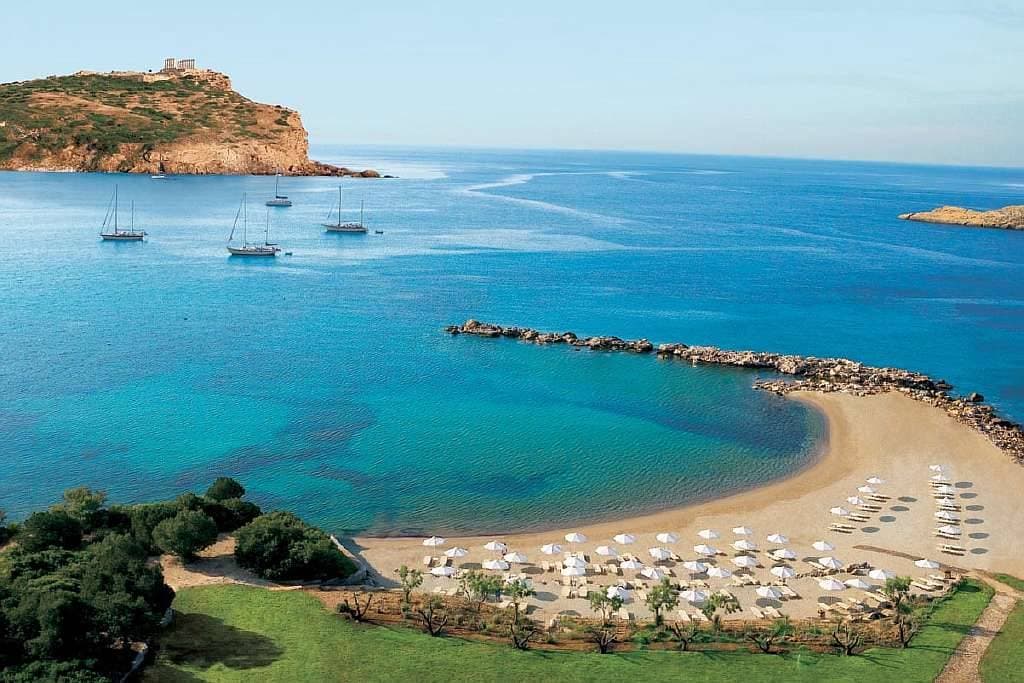
The main resort towns of the Athenian Riviera:
Faliro, Marina Flisvu
Flisvos has a delightful bay with stunning views of the Sardonian Gulf. The local marina and the bay as a whole are the “calling card” of the Athenian Riviera, and Flisvos Park is surprisingly good for relaxing walks or cycling.
Take on arms: Until September 30, from Wednesday to Saturday from 17:30 to 20:30, bicycles are offered free of charge to everyone for a three-hour walk, as part of the “Tram - Bicycle. Coastal Routes.
Glyfada
Glyfada is one of the most beautiful suburbs of Athens, distinguished by its amazing sandy beaches adorned with date palms. Here you can get immense pleasure from swimming in the purest water, as well as having fun until late in the famous clubs of the area.
Elegant villas, stylish shops, popular restaurants and luxury hotels - all this together creates a magnificent picture in which the beauty of nature is harmoniously combined with luxury and comfort.
Glyfada Golf Club boasts a field that meets international standards.
Voula
2 km south of Glyfada is the Voula area, a real gem of the Athenian Riviera, with two well-equipped beaches and embankments: A` and B` Voulas. This is an ideal place for swimming and water sports, with excellent conditions for recreation and excellent infrastructure. Water skiing, beach volleyball and water slides are especially developed here, turning the beach into an amusement park.
Enjoy a cup of coffee by the sea, continuing your day with refreshing cold cocktails - until the very evening - in one of the nearby clubs.
Beach "A` Voulas" in 2011 was awarded the Blue Flag - evidence that this is a great place for family holidays.
Vouliagmeni
Vouliagmeni is an impressive suburb, with lush vegetation and beautiful beaches. Here are some of the most luxurious hotels and respectable restaurants in Attica, as well as famous nightlife music and entertainment centers that can satisfy the needs of the most demanding visitors. Don't miss the opportunity to swim in the crystal waters of the Asteras beach, awarded the Blue Flag in 2011, and relax in serenity while admiring the beauty of the surrounding nature.
Please note: Vouliagmeni Lake is an object of exceptional natural beauty, definitely worth a visit.
Varkiza
Varkiza is one of the most popular tourist resorts, located along the coastline, with beautiful bays and beautiful landscape geophysics. Here you can swim on the beaches with crystal clear waters, as well as engage in water sports.
Be sure to taste the unique dishes of fresh fish and seafood in traditional taverns and uzeri (glasshouses).
For windsurfers: here you will get an unforgettable windsurfing experience thanks to the well-organized infrastructure.
The picturesque coastal route along the Saronic Gulf also includes such unique tourist resorts as Lagonisi and Saronida, ending at Cape Sounion, dominated by the majestic Temple of Poseidon.
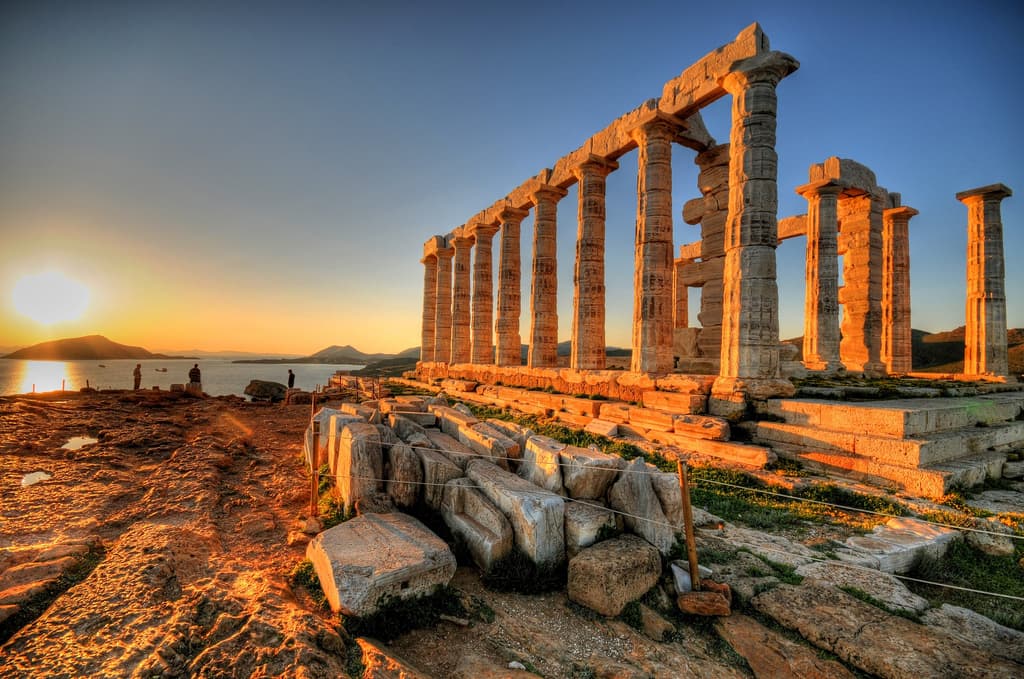
How to get to the suburbs of Athens - the Athenian Riviera?
In order to get to the suburbs, in addition to a taxi, you can use the tram departing from Syntagma (Constitution) Square:
1st route– tram line T1, going towards Neo Faliro (SEF stop)
2nd route- line T2 towards Voula (stop "Asklpiio Voulas").
Line Τ3– routes Voula – Neo Faliro, is perhaps the most scenic route, providing its passengers with the opportunity to enjoy a walk along the coastline.
In addition to tram routes, the southern suburbs are served by bus routes:
- Β3(Akadimia - Glyfada, along Vouliagmeni Avenue)
- Ε22(Akadimia - Saronida, express).
Thessaloniki
The second largest city in Greece after Athens. Strictly speaking, it is not a resort, because in order to swim here, you have to go out of town. But in Thessaloniki itself there is a lot of interesting things for the traveler: ancient sights (White Tower, arch and tomb of Galeria, agora, Roman forum), museums, a water park and an amusement park, nightclubs, restaurants and family taverns, and many shops, including, fur shops.
pros
- own airport
- many attractions
- the opportunity to see the sights of the Greek capital, which is quite a long time to get by land transport from other resorts
- rich nightlife
- fur shops
Minuses
- not suitable for lovers of active and extreme recreation
- beaches outside the city
Crete

The largest island in Greece, the fifth largest island in the Mediterranean region. It is considered one of the most popular European resorts. By the way, it is closer to Africa than to Europe, which is why the season here lasts longer than in other Greek resorts, but in July-August it can be very hot. There are most hotels and a huge number of attractions here: archaeological excavations in Knossos, Malia, Phaistos and Gortyn, medieval Venetian buildings in Heraklion, Chania and Rethymnon, the Samaria Gorge, the picturesque plateau of Lassithi with the cave of Zeus located on it. The most picturesque coast in the area of the cities of Elounda, with modern marinas for yachts, and Agios Nikolaos, with its unique lake connected to the Aegean Sea by a narrow channel.
Also from here you can easily go on a cruise to the neighboring Greek islands: Santorini, Rhodes, Mykonos, Naxos, Paros and others. Every year Crete hosts an art festival and a colorful carnival in Rethymno. Fans of outdoor activities can go diving here.
pros
- own airport
- the most developed infrastructure
- a huge number of attractions
- you can go diving
Minuses
- the most popular resort in Greece - many tourists in the "high" season
Rhodes island
A real pearl of the Mediterranean: this island is rich in natural beauty and archaeological sites (the historical part of the city of Rhodes is included in the UNESCO World Heritage List and, believe me, it is worth it!). The history of the island is closely intertwined with the history of the Knights of Malta. No wonder the island is one of the most popular holiday destinations in Greece.

In the summer, various festivals are held in Rhodes: the medieval one, where residents in historical costumes organize a fair, demonstrative jousting and other exciting performances, and the watermelon festival, where you can see many amazing crafts from this berry: plates, candlesticks, soccer balls, hats, as well as ride on watermelon peels.
pros
- station for professional windsurfing and kitesurfing
- there is a casino
- one-day cruises to Turkey (Marmaris)
Minuses
- it can be too windy, especially on the Aegean coast
Corfu island
The greenest Greek island for lovers of a relaxing holiday. Here it is pleasant to lie on the sandy beach (the average temperature in summer is +25-30°C) or go on a leisurely boat trip through the lagoons and caves.
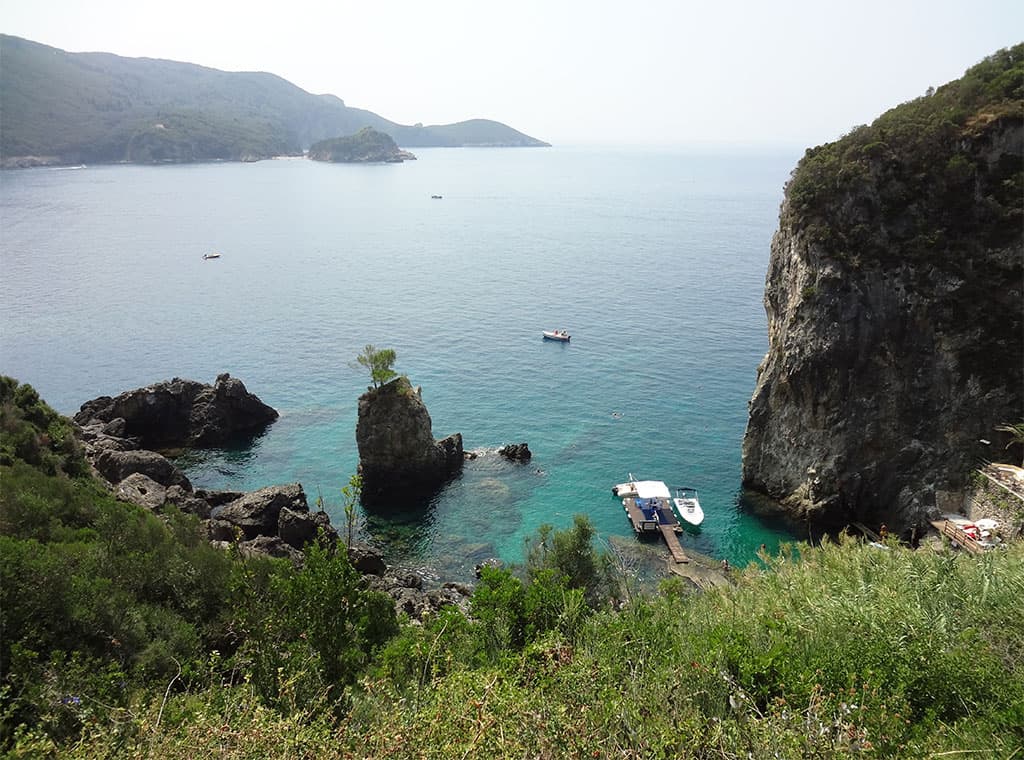
An interesting experience can be a safari-style trip or a bike ride through the picturesque places of Corfu. Those who cannot sit still can find centers on the beaches for organizing kite surfing, jet skiing, flying over the sea with a parachute, diving, etc. For the Orthodox, in the center of the capital of the island, Kerkyra, there is a cathedral with unique imperishable relics Saint Spyridon Trimifuntsky.
pros
- own airport
- the greenest island
- great for holidays with children
Minuses
- not many attractions and activities, can be boring
- a rather narrow strip of beaches located along the highway; not all beaches are sandy
- the shortest beach season
Santorini Island (Fira)
The most mysterious and unusual island of the Cyclades group. In 1500-1650 BC. at this place there was a powerful earthquake and a volcanic eruption - the surviving remnant of the crater and became the island of Santorini. From this, there are black mountains and beaches of various colors - white, red and black.
Many researchers, including the famous Jacques-Yves Cousteau, still assume that it is here, in the caldera of the volcano, which, after an earthquake, plunged to a depth of 300-400 meters, is the missing Atlantis. Many tourists choose this island for romantic dinners, weddings and honeymoons: breathtaking views and the unique atmosphere of the island are conducive to this.
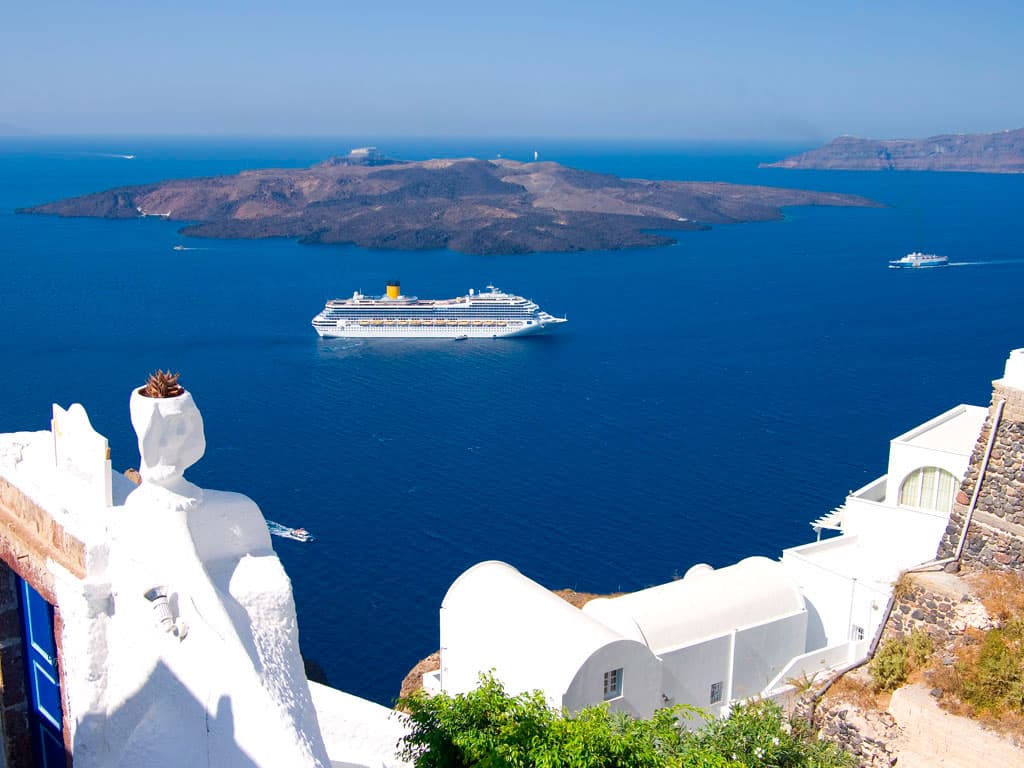
Some interesting facts about the island:
- The hypothesis of the death of the Minoan civilization, as a result of the eruption of the Santorini volcano, is considered the most plausible, but not the only one. There are versions that the Achaean Greeks, who invaded from the mainland, could be the culprits.
- Jules Verne visited Santorini with a group of volcanologists. What he learned here was used by him to describe the volcanic eruption in the novel The Mysterious Island.
- Pumice from the quarries of Santorini was used in the 60s of the XIX century in the construction of the Suez Canal.
- In the bay near the port lies a circle of black mourning buoys. This is the site of the sinking in 2007 of the Greek cruise ship "Sea Diamond", as a result of hitting the volcanic reef of one of the five islands that make up the Santorini archipelago - Nea Kameni.
- There is a NATO base on Santorini.
Santorini has long been ranked first in the list of the most beautiful islands in the world, leaving behind Bali (Indonesia), Cape Breton (Canada), Boracay Islands (Philippines), Great Barrier Reef (Australia).
The beauty of Santorini is truly impressive. At the same time, admiring the magnificent caldera, you do not forget for a second that this beauty brings danger and destruction. Here you instantly realize the full power of nature and our planet and feel the feeling of how defenseless a person can be before this force.
A day trip to Santorini, for example, from Crete, can be a pleasant boat trip for the first acquaintance with Santorini, however, during such an excursion, you will definitely not have enough time to get acquainted with the beauties and sights of the island.
Some of the sights and hiking trails of Santorini:
- Excavations of the ancient city near the village of Akrotiri, 15 km south of the capital of the island, Fira. The city was buried under a thick layer of volcanic ash during the eruption, thanks to which it is perfectly preserved. It consists of 2-3-storey houses, inside of which well-preserved frescoes were found, somewhat reminiscent of Cretan Minoan palaces.
- Walking route Oia - Fira, starting from the caldera trail and leading along the old road to the churches Profitis Ilias and Timios Stavros on the top of the mountain.
- Scenic walking route Imerovigli - Skaros, lasting about 30 minutes and leading to the Venetian fortified castle Skaros towering above the sea on top of a sheer cliff.
- Perissa - Vouno Mass - Ancient Fira. Following this route from Perissa beach (with black volcanic sand), you will reach Wuno mass, where ancient Fira, the capital of the island, stood, and now excavations are underway, visiting which you can see the agora, the theater, Roman baths, the sanctuary, the Gymnasium.
- Be sure to take a boat trip around the caldera, visiting the islands of Palea Kameni, Nea Kameni and Therasia. The uninhabited island of Nea Kameni is the most visited among tourists - it, in fact, is an active volcano that last erupted in 1956. The landscape of the island of Nea Kameni is absolutely lifeless, when visiting it is recommended to have a hat and wear shoes with thick soles, as the soil on the island in the crater area heats up to + 80 ° C! On the island of Palea Kameni there are thermal springs with water that has a yellow-blue color due to the high sulfur content. You can swim in them, but swimsuits and swimming trunks will have to be thrown away after that, because. it is not subject to deletion.
pros
- exotic black beaches
- the most beautiful and romantic views in all of Greece
- the opportunity to walk around the crater of the volcano
- in the summer there are numerous music festivals
Minuses
- no direct flights from Russia
- not suitable for families with children
Kos island
A small cozy island (only 112 km of coastline), which is part of the Southern Sporades archipelago. Strong winds often blow here, because of this, most of the northern coast is not developed. The best places for a beach holiday are to the right of the capital (on the map) or to the left to the cape. It is considered the birthplace of the ancient physician Hippocrates.
pros
- has its own international airport
- suitable for a relaxing relaxing holiday
- natural and architectural and historical sights for every taste
Minuses
- it can be windy
- located in a seismically unstable zone
Zakynthos Island (Zakynthos)
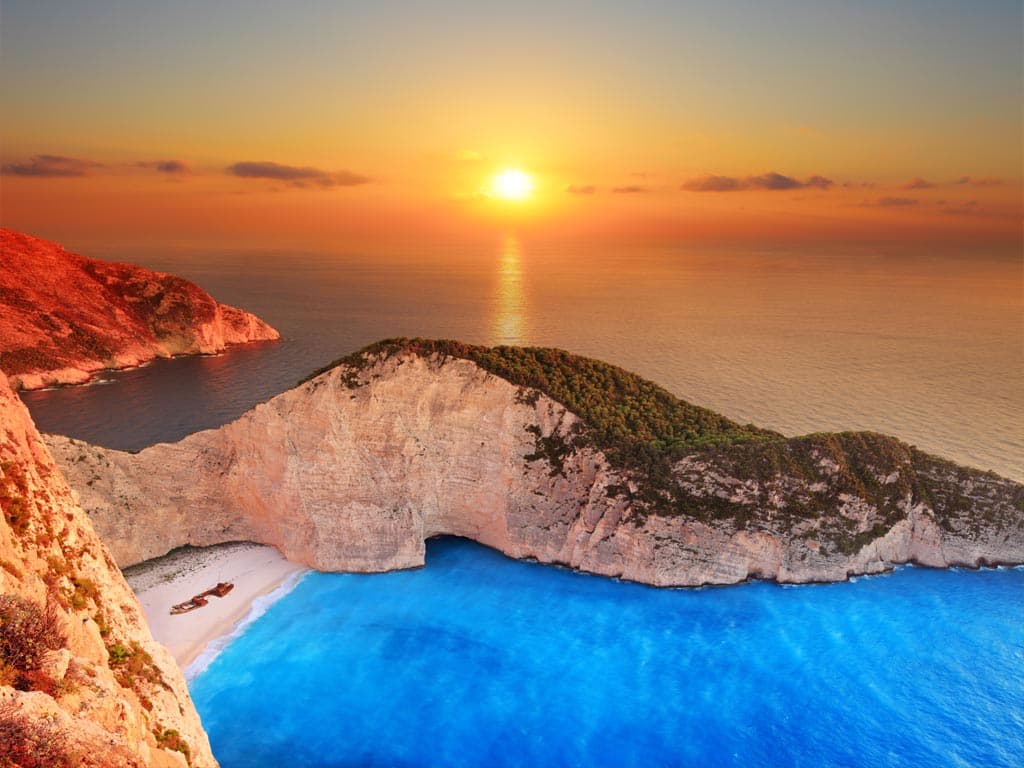
Zakynthos is one of the three Ionian islands of Greece, located near the Peloponnese peninsula (9.5 nautical miles) and the island of Kefalonia (8.5 nautical miles). A picturesque island with numerous beaches, Navagio Bay - a symbol of the island (you can see it in any article about Zakynthos), Caretta-Caretta turtles, magnificent old Venetian mansions, etc. The capital of the island - the city of Zakynthos - resembles a medieval city with narrow cobbled streets and beautiful squares, in which the mansions of Venetian merchants with loggias and galleries-arches are perfectly preserved.
pros
- great beaches
- developed tourist infrastructure
- scenic views
Minuses
- perhaps, for some, on Zakynthos, in contrast to the nearby island of Kefalonia, the “spirit of true Greece” may not be enough - like in many places popular for tourists, there is a dominance of pizzerias and McDonald's, for the needs of British and Italian tourists who have long settled here
Kefalonia Island (Kefalonia)
The largest and most mountainous island of the Ionian Sea, located near the Peloponnese, between the islands of Ithaca, Zakynthos and Lefkada. Picturesque, green and very clean island. Unfortunately, many architectural sights from the Venetian occupation on the island were destroyed by the earthquake in 1953, however, there are many beautiful places to visit on the island. The "visiting card" of the island is the world-famous Myrtos beach.
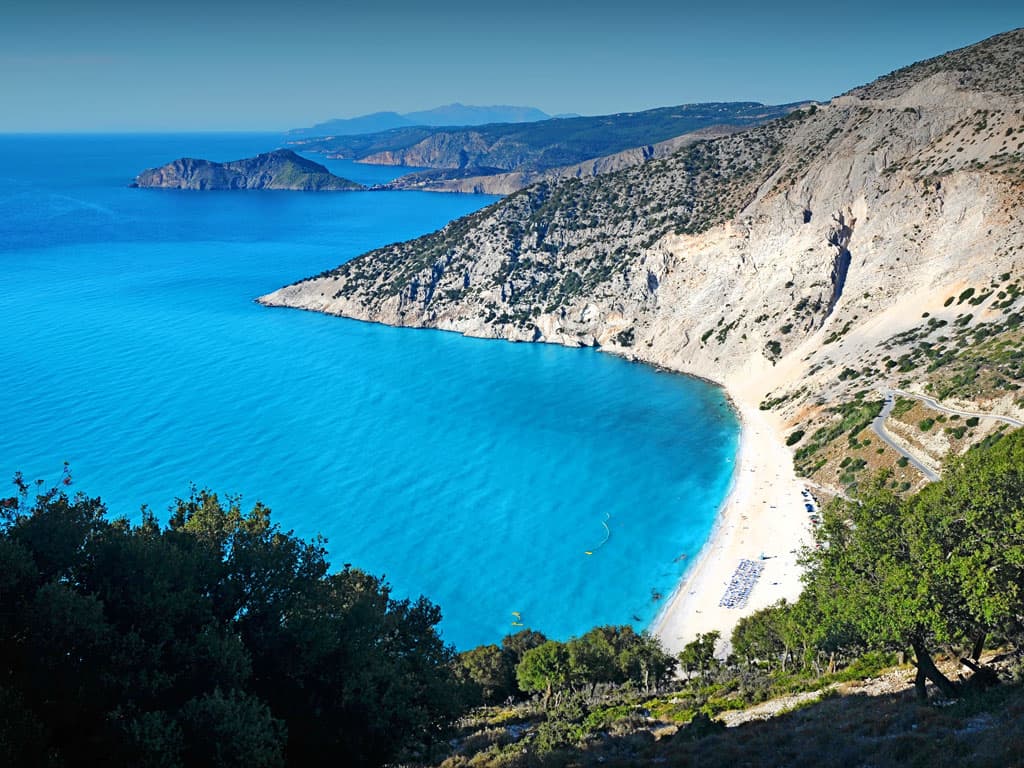
pros
- great beaches
- good for holidays with children
- here you can feel the "real", and not adapted for the Anglo-Italian tourist, Greece
Minuses
- relatively difficult for Russians transport accessibility of the island
Mykonos Island
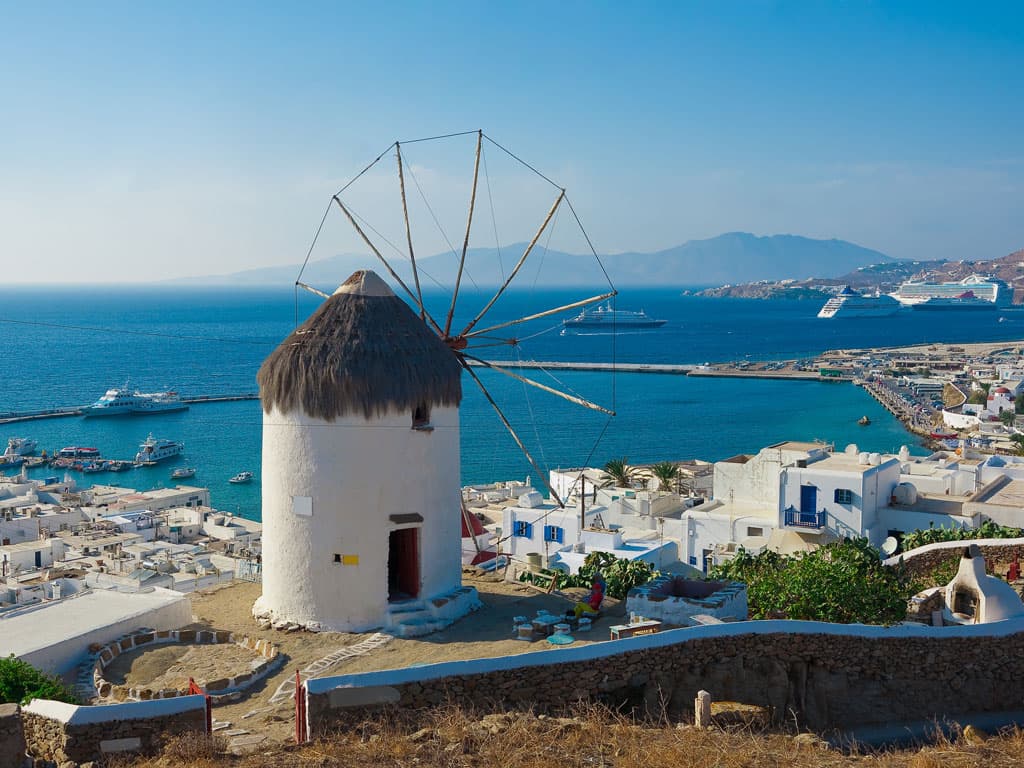
Mykonos is the nightlife capital of Greece, a vibrant mosaic of wonderful beaches and picturesque streets. The name of this island has long become a symbol of prestigious and fashionable recreation and life to the fullest. Representatives of the world bohemia and the offspring of the noble families of Europe love to relax here. The destination is also very popular among gay tourists.
pros
- great beaches
- excellent tourist infrastructure
- scenic views
Minuses
- relatively difficult for Russians transport accessibility of the island
Peninsula Halkidiki
Halkidiki is three rather different peninsulas, with their outlines resembling the trident of Zeus. The most popular among tourists is the Kassandra peninsula, on the far left. The tourist infrastructure is the most developed here: there are many hotels, restaurants and nightclubs. The middle peninsula - Sithonia - is known for its picturesque landscapes and wild beaches.
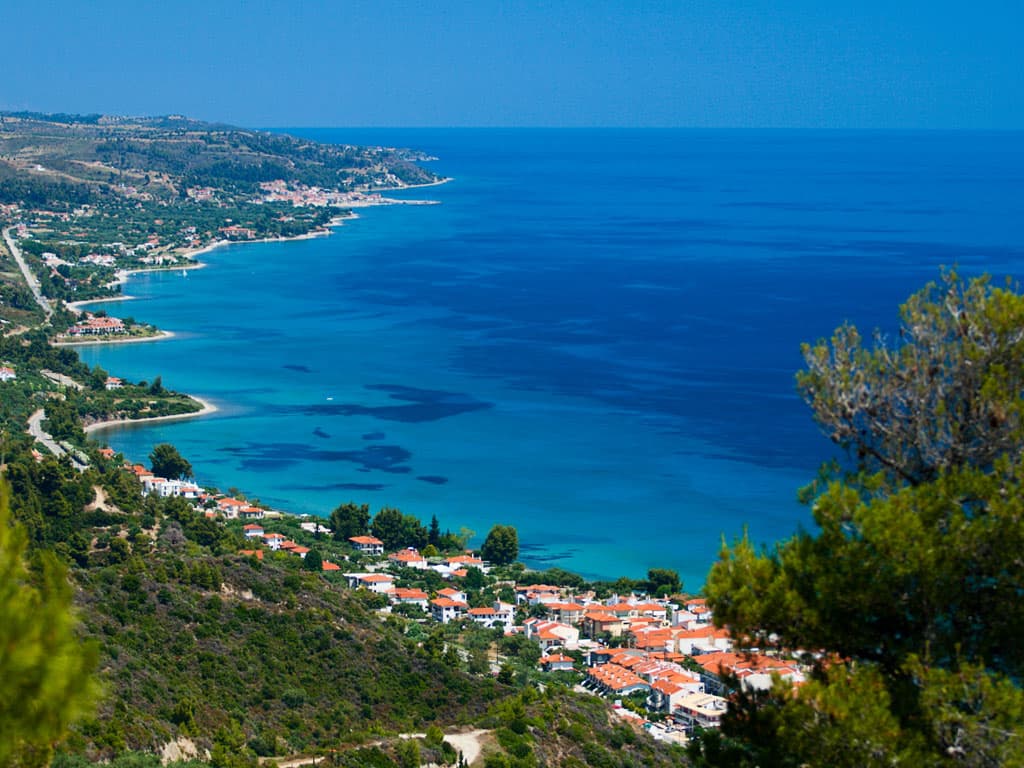 Pine groves, the purest Aegean Sea, soft sand and cozy bays make Halkidiki attractive for families with children. The third, easternmost, peninsula is the monastic Aion-Oros (Athos or "Holy Mountain", where 19 Orthodox monasteries are located). Access to this "monastic state" is possible only for men, is limited and requires a separate permit.
Pine groves, the purest Aegean Sea, soft sand and cozy bays make Halkidiki attractive for families with children. The third, easternmost, peninsula is the monastic Aion-Oros (Athos or "Holy Mountain", where 19 Orthodox monasteries are located). Access to this "monastic state" is possible only for men, is limited and requires a separate permit.
pros
- scenic landscapes
- pine groves
- clean sandy beaches with a gentle entrance
- there is a casino
Minuses
- long transfer from the airport to most hotels
Peloponnese Peninsula
A truly huge (with an area of 22 million km 2) is called "Greece in miniature", it has everything we love this hospitable country for: beautiful beaches, picturesque mountain ranges, lively tourist centers and traditional villages with a patriarchal way of life, legendary ancient cities and archaeological sites and much, much more!
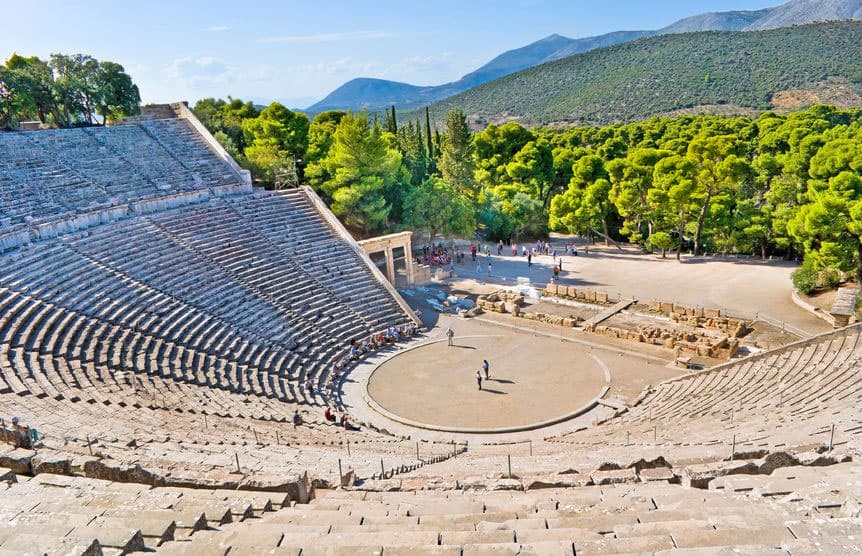
In the west, the peninsula is washed by the Ionian Sea, and in the east by the Aegean Sea. The 6-kilometer Corinth Canal, dug by hand in the 19th century, unites the two seas.
The main cities of the Peloponnese: Patras, Sparta, Tripoli, Pyrgos, Kalamata, Araxos, Napflion and Corinth.
pros
- own international airport
- great beaches
- ideal for a relaxing family holiday, incl. with kids
- an abundance of truly significant and interesting tourist attractions
- scenic views
- all-season availability of some SPA-resorts
Minuses
- there are no large resorts: hotels and apartments are quite scattered
Pieria
The capital of the region is the city of Katerini, and the most popular resort on the coast is the city of Paralia. I was struck by the abundance of fur shops (almost every factory in Kastoria considers it its duty to open a fur salon in Paralia). Therefore, if the purpose of your trip is the purchase of fur products, and you are not planning a full 1-2-week vacation in Greece, Paralia and neighboring coastal towns may be a good option. In other cases, I’m not sure: the beaches that we saw here cannot compete with the beaches I saw earlier in other parts of Greece, in particular: the suburbs of Athens, the Halkidiki peninsula, the islands of Crete, Rhodes, Corfu, Santorini and others, the cleanliness of the coast and water, nor the tourist infrastructure.
Being in the mainland of Greece, it is definitely worth getting to know the beauties of Pieria: it is here that the habitat of the ancient Greek gods is located - the famous Mount Olympus with a magnificent national natural park on the slopes. Picturesque villages and mountain resorts at the foot of Mount Olympus are full of charm. The mountain village of Litohoro was especially struck by its unusual atmosphere.
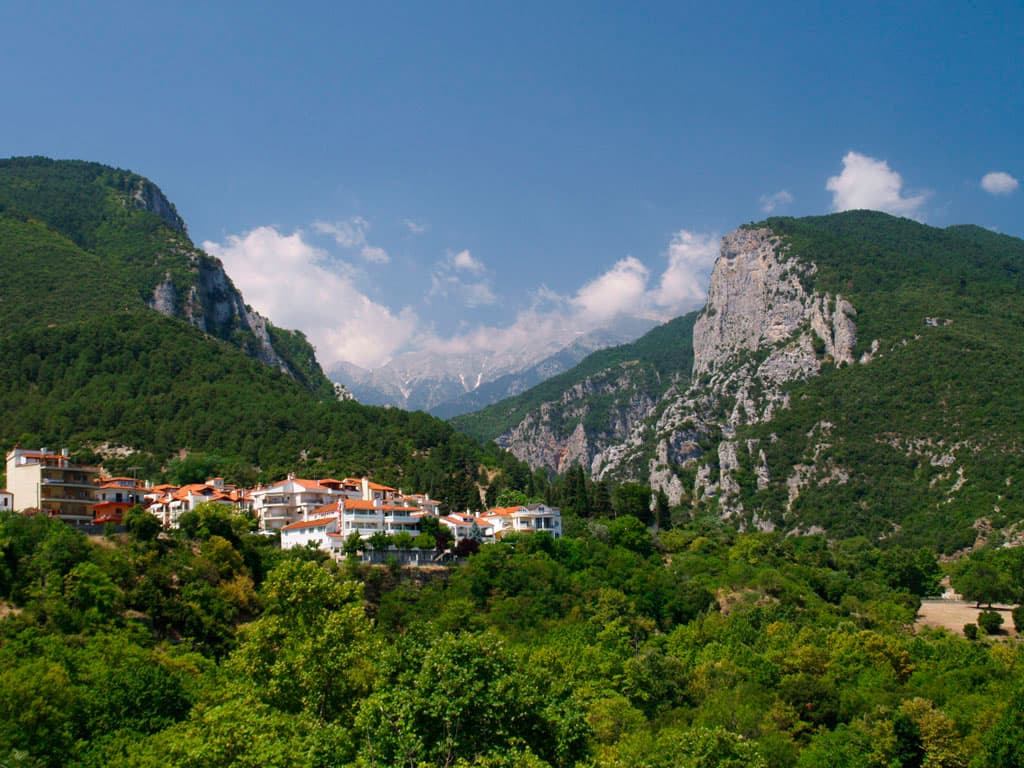
And in addition to natural beauties, there are many archaeological sites in the vicinity: Dion, Pydna, Paliambela Kolindru and Platamonas.
So, I would advise you to visit Pieria, but not for a beach holiday, but for the purpose of excursions or buying a fur coat.
pros
- an interesting destination for sightseeing holidays, as well as for all those who are fond of mountain sports
- own international airport (Thessaloniki)
- a good opportunity to combine "useful with pleasant" for those whose main purpose of a trip to Greece is the purchase of fur products
Minuses
- rather long transfer from the airport
- comparatively dirty and not too well equipped beaches
Useful links:
If you liked this article or helped - share it with your friends on social networks, the "Like" buttons are below.

